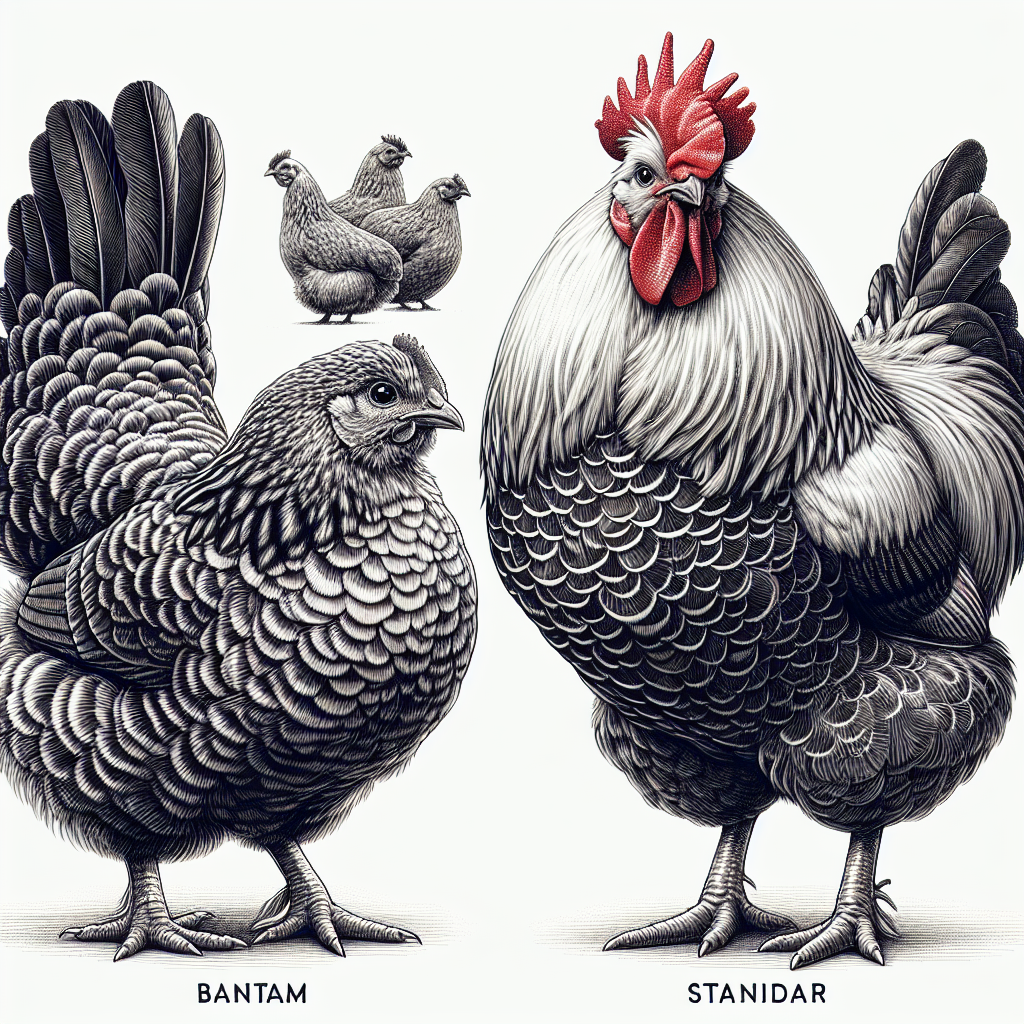In the intriguing article, “How Do Seasonal Changes Influence Social Behaviors In Chickens?,” we explore the fascinating relationship between seasonal changes and social behaviors in these feathered creatures. Delve into the world of chickens and discover the remarkable ways their interactions and behaviors are influenced by the changing seasons. From mating rituals to hierarchy dynamics, understanding the impact of seasons on social behaviors in chickens sheds light on the intricate patterns of behavior in the animal kingdom. Explore this captivating subject and gain insights into the intricate world of chicken social dynamics.
Seasonal Changes and Social Behaviors in Chickens
Chickens, like many animals, are greatly influenced by seasonal changes when it comes to their social behaviors. From mate selection to communication, their behaviors are intricately linked with the changing seasons. Understanding these patterns can provide valuable insights into the lives of these fascinating creatures.
Mate Selection and Breeding
Mate selection and breeding in chickens are greatly influenced by seasonal changes. During the spring and summer months, when the days are longer and the temperatures are warmer, chickens become more active in seeking potential mates. Male chickens, known as roosters, engage in elaborate courtship behaviors to attract females. They may display their bright plumage, engage in vigorous dancing rituals, and emit loud crowing vocalizations. These mating behaviors are more pronounced during the breeding season, as roosters strive to secure mates and pass on their genes.
Aggression and Dominance
Aggression and dominance play significant roles in the social dynamics of chickens, and their intensity can vary depending on the season. During the breeding season, when competition for mates is fierce, aggression levels among male chickens may increase. Hormonal factors also come into play, as testosterone levels rise in males during this time, leading to heightened aggression. Dominance hierarchies are commonly observed in chicken flocks, with the top-ranking individuals establishing their authority through displays of dominance and pecking order.
Social Hierarchies
Social hierarchies, also known as pecking orders, are an inherent part of chicken societies. Seasonal changes can influence the formation and stability of these hierarchies. During the breeding season, social hierarchies become more emphasized as individuals compete for mates and resources. The top-ranking chickens are more likely to secure mates and have access to the best nesting spots and food sources. Social recognition and individual recognition play important roles in maintaining the stability of these hierarchies, as chickens remember and recognize their flockmates.
Foraging and Food Sharing
Foraging behaviors in chickens are heavily influenced by seasonal changes, particularly in relation to food availability. Chickens have a natural instinct to search for food, and their foraging behaviors may vary depending on the season. During the warmer months, when food sources are more abundant, chickens may engage in more cooperative foraging behaviors. They communicate with each other through vocalizations and body language, signaling the presence of food and coordinating their efforts. Food sharing is also commonly observed within chicken flocks, especially during times of scarcity when resources become limited.
Nesting Behaviors
Nesting behaviors in chickens are intricately tied to seasonal changes. Chickens have a strong instinct to build nests and select suitable sites for egg-laying. During the spring and summer months, when the weather is warmer and more conducive to raising chicks, chickens become more active in nest building. They gather materials such as twigs, straw, and feathers to construct comfortable and secure nests. The breeding season triggers hormonal changes in hens, leading to increased broodiness and a stronger desire to incubate their eggs and bond with their offspring.
Mate Guarding and Parental Care
Male chickens exhibit seasonal patterns of mate guarding, particularly during the breeding season. As competition for mates intensifies, roosters become more vigilant and protective of the females they have mated with. They may engage in behaviors such as chasing away other males, vocal displays, or physically positioning themselves between the female and potential rivals. Parental care is also important in chickens, with both parents contributing to the survival of their offspring. Seasonal changes can influence the level of parental investment, with increased attentiveness observed during times of heightened predation risk or when resources are limited.
Communication and Vocalizations
Chickens utilize vocalizations as a crucial form of communication, and these may vary depending on the season. Roosters often emit loud crowing vocalizations to establish their presence, assert dominance, and attract mates. Vocalizations can also serve as alarm calls, alerting other flock members to potential threats from predators. During the breeding season, chickens may engage in specific vocalizations for courtship and mating purposes, such as soft clucking sounds or low-pitched wing flapping noises.
Roosting and Sleep Patterns
Roosting and sleep patterns in chickens can be influenced by seasonal changes. Chickens have a natural instinct to roost, seeking elevated perches or structures to rest and sleep. During the colder months, chickens may exhibit a preference for roosting closer together to preserve body heat. This behavior, known as social thermoregulation, helps them stay warm and maintain optimal body temperature. Chickens also exhibit different sleep patterns based on the season, with longer periods of rest during the shorter, darker days of winter.
Social Bonding and Affiliative Behaviors
Social bonding and affiliative behaviors contribute to the cohesion and well-being of chicken flocks. Chickens engage in various actions to strengthen social bonds with their flockmates, and these behaviors can be affected by seasonal changes. Grooming, preening, and allopreening (mutual grooming between individuals) are examples of affiliative behaviors observed in chickens. During the breeding season, social bonding becomes particularly crucial, as individuals form pairs for mating and parental care.
Migration and Seasonal Movements
Unlike many bird species, chickens are not migratory and do not undertake long-distance seasonal movements. However, they may exhibit localized movements within their environment in response to seasonal changes in resource availability. For example, chickens may move to different areas of their habitat to find richer foraging grounds or suitable nesting sites. These movements may also be influenced by social factors, such as the presence of dominant individuals occupying preferred areas or the need to join larger groups for protection against predators.
Understanding the influence of seasonal changes on the social behaviors of chickens provides valuable insights into their biology, adaptations, and strategies for survival. By studying these patterns, researchers and poultry enthusiasts can gain a deeper appreciation for the intricacies of chicken societies and their remarkable ability to adapt to changing environmental conditions.




